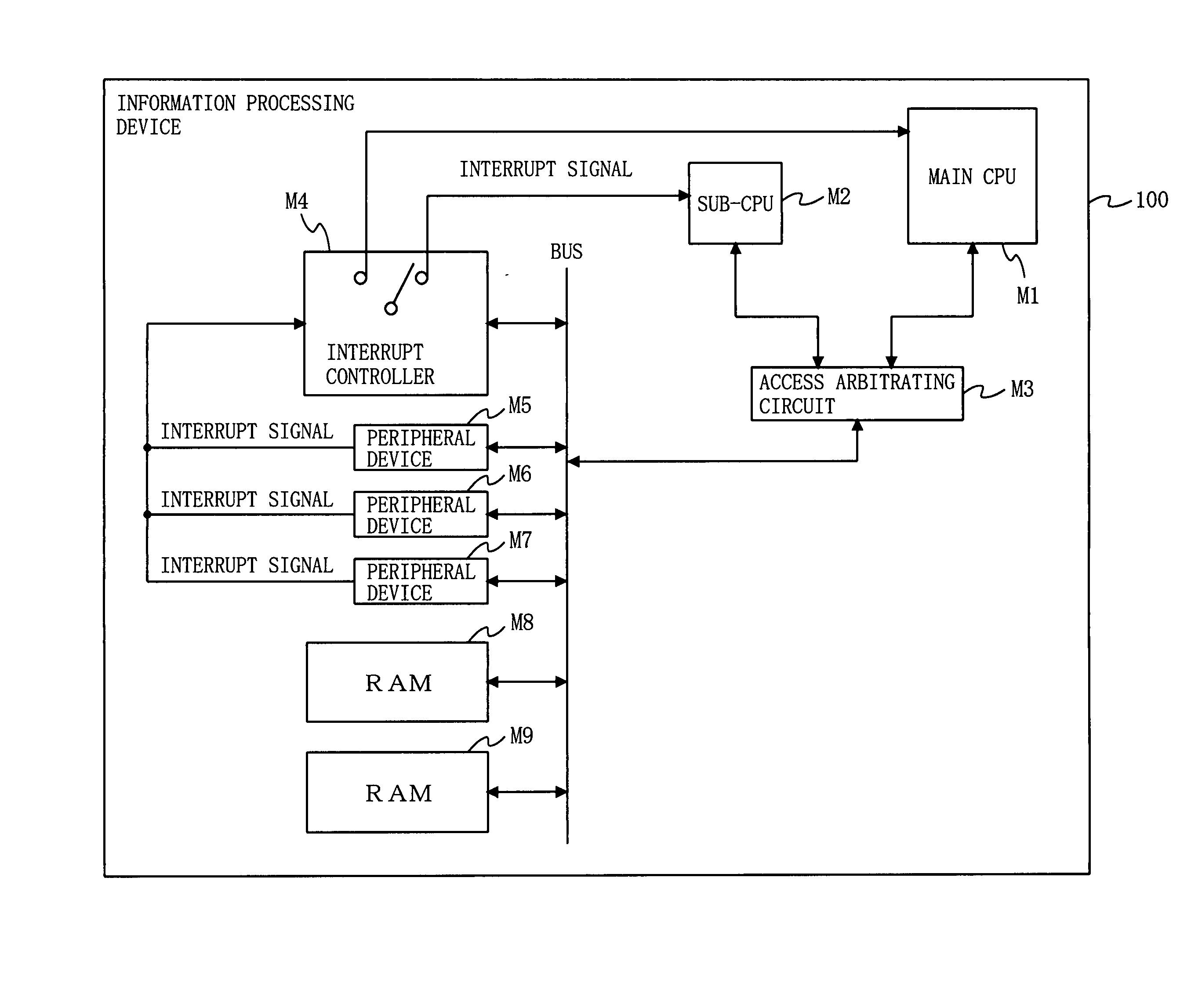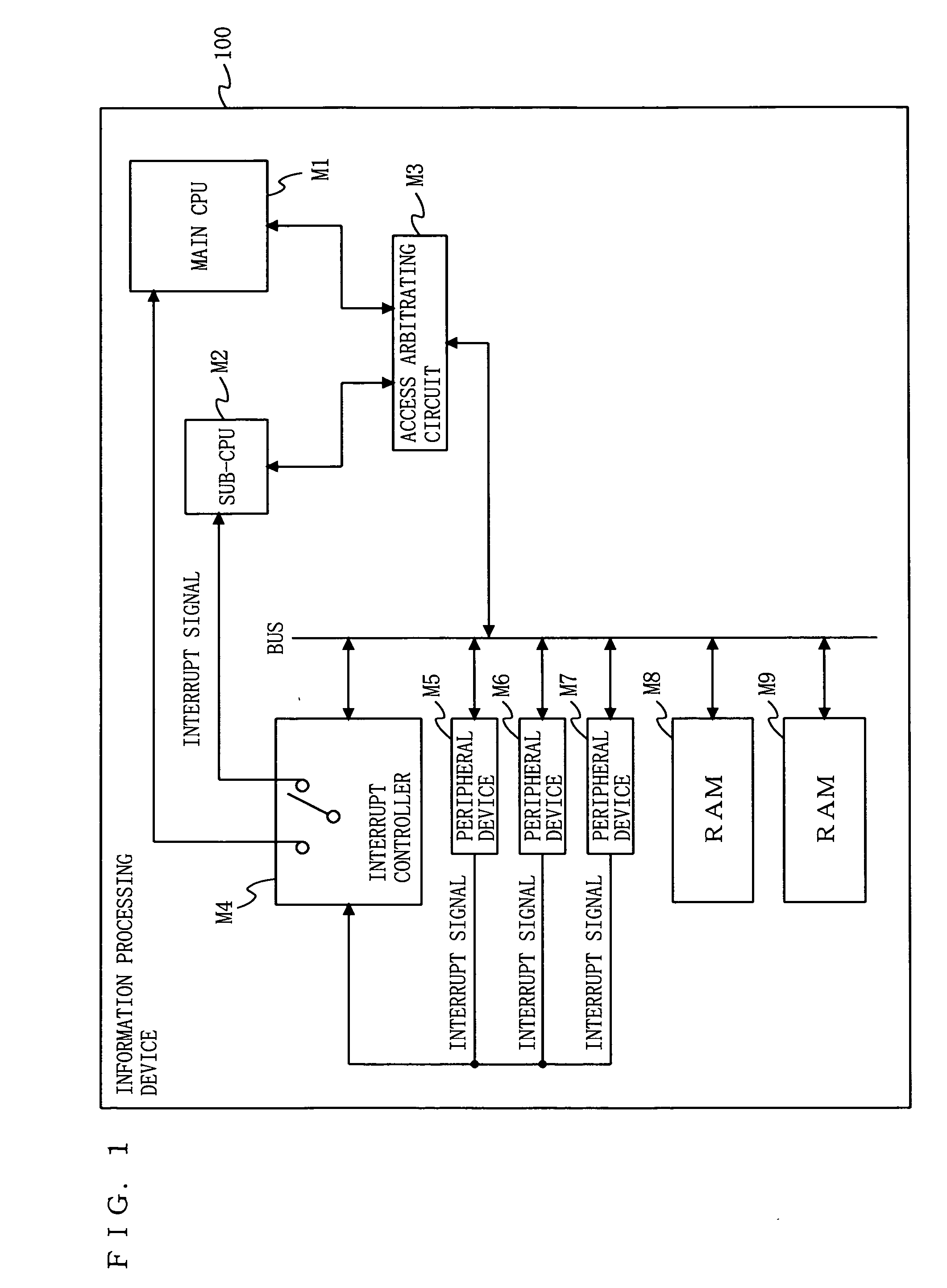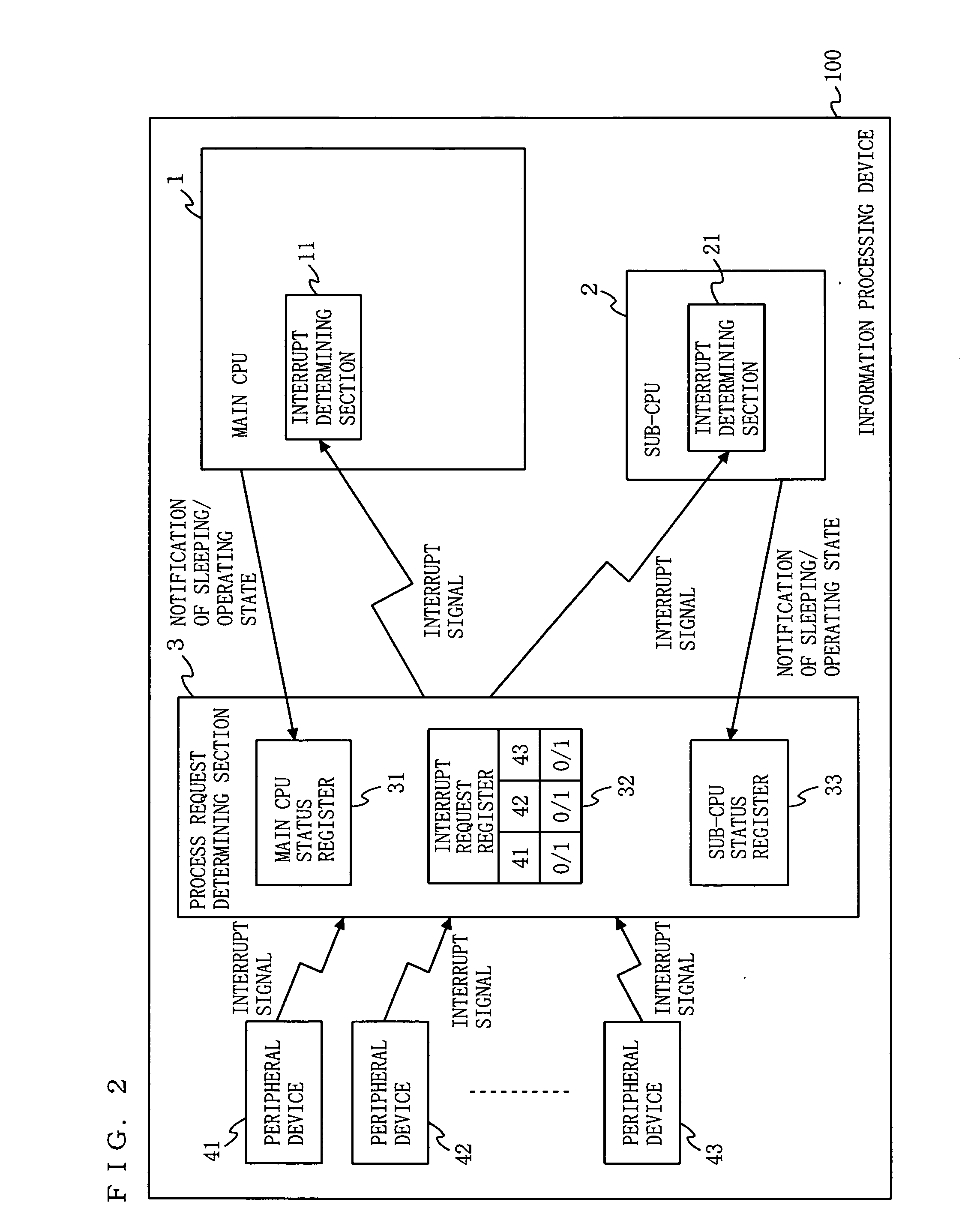Information Processing Device
a technology of information processing device and cpu, which is applied in the direction of multi-programming arrangement, instruments, high-level techniques, etc., can solve the problems that the utilization of two cpu resources cannot be flexible and effectively utilized, and achieve the effects of reducing power consumption, reducing processing load, and effectively using the cpu of the information processing devi
- Summary
- Abstract
- Description
- Claims
- Application Information
AI Technical Summary
Benefits of technology
Problems solved by technology
Method used
Image
Examples
first embodiment
[0080]FIG. 1 is a block diagram illustrating a hardware configuration of an information processing device 100 according to a first embodiment of the present invention. In FIG. 1, the information processing device 100 comprises a main CPU (M1), a sub-CPU (M2), an access arbitrating circuit (M3), an interrupt controller (M4), peripheral devices (M5 to M7), and RAMs (M8 and M9). The numbers of the peripheral devices (M5 to M7) and the RAMs (M8 and M9) are not limited to those of the example of FIG. 1.
[0081] The main CPU (M1) is a CPU which can take two states, i.e., an operating state and a sleeping state. The sub-CPU (M2) is a CPU which has power consumption lower than that of the main CPU (M1), and can take two states, i.e., an operating state and a sleeping state. The access arbitrating circuit (M3), when accesses to a bus simultaneously occur from the main CPU (M1) and the sub-CPU (M2), manages competition arbitration. The RAMs (M8 and M9) can limit accesses from the main CPU (M1)...
second embodiment
[0101] In a second embodiment of the present invention, an information processing device has a hardware configuration similar to that of the first embodiment, and therefore, FIG. 1 is referenced. FIG. 4 is a block diagram illustrating a functional configuration of an information processing device 200 according to the second embodiment of the present invention. In FIG. 4, the information processing device 200 comprises a main CPU 1, a sub-CPU 2a, a process request determining section 3a, and peripheral devices 41 to 43. In FIG. 4, parts having functions similar to those of the first embodiment are indicated by the same reference numerals and will not be described. The process request determining section 3a includes a main CPU status register 31, an interrupt request register 32, a sub-CPU status register 33, and a sub-CPU process request completion register 34.
[0102] The sub-CPU process request completion register 34 memorizes whether or not the sub-CPU 2a is prohibited from being i...
third embodiment
[0115] In a third embodiment of the present invention, an information processing device has a hardware configuration similar to that of the first embodiment, and therefore, FIG. 1 is referenced. FIG. 6 is a block diagram illustrating a functional configuration of an information processing device 300 according to a third embodiment of the present invention. In FIG. 6, the information processing device 300 comprises a main CPU 1b, a sub-CPU 2b, a process request determining section 3b, peripheral devices 41 to 43, a main CPU wake-up request sending section 44, a memory area determining section 51, and a memory area 61. In FIG. 6, parts having functions similar to those of the first and second embodiments are indicated by the same reference numerals and will not be described in detail.
[0116] The memory area 61 is a memory area which can be referenced by the main CPU 1 and the sub-CPU 2. The memory area 61 corresponds to the RAMs (M8 and M9) of FIG. 1.
[0117] The memory area determinin...
PUM
 Login to View More
Login to View More Abstract
Description
Claims
Application Information
 Login to View More
Login to View More - R&D
- Intellectual Property
- Life Sciences
- Materials
- Tech Scout
- Unparalleled Data Quality
- Higher Quality Content
- 60% Fewer Hallucinations
Browse by: Latest US Patents, China's latest patents, Technical Efficacy Thesaurus, Application Domain, Technology Topic, Popular Technical Reports.
© 2025 PatSnap. All rights reserved.Legal|Privacy policy|Modern Slavery Act Transparency Statement|Sitemap|About US| Contact US: help@patsnap.com



